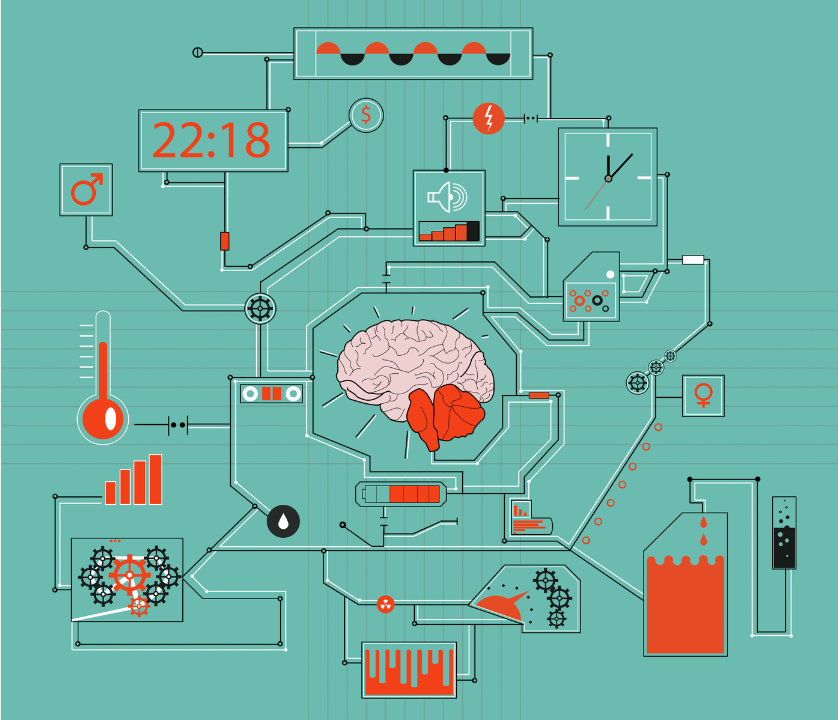End of the Line Activity Adds Memory Recall to Nursing Course
Recall is an important part of establishing memory.
Each time the brain has to recall information, it is restructured and reinforced. It can be thought of as a memory strengthener, working out the muscle that can pull information to the forefront of our thoughts when needed.
What’s the big idea?
Educators have long utilized recall and retrieval. The first paper about recall practice was published in 1909, over 100 years ago! It is an essential step in the learning process and makes the memory of the concept more durable and flexible for future use. It has been found to impact learning more significantly than re-reading information alone.
This activity calls for students to recall. It helps find what they do know and what they don't know. The End of the Line activity is an excellent active learning technique for practicing recall.
How to Implement
I like to use this activity as a warm-up for class. Based on what we know about retrieval practice, it also gives students and educators feedback on what topics are understood and which need some work.
Start by dividing students into groups. I recommend no more than six students per group.
You will need to create 10-20 rapid-fire, knowledge-based statements. The statements should only be one sentence related to the content you covered in a previous class period or their pre-work. Here are some examples:
Name an assessment finding in sepsis
Describe skin changes related to peripheral vascular disease
Write down dietary instructions for a patient with Chrons
Give an appropriate IV fluid for hypernatremia
What is the normal range for hemoglobin
You can include true/false statements, up/down arrow situations, or have students draw a diagram or process. Any question format will work!
Ask one student to number a blank piece of paper with the number of statements that you have prepared above. Then all the students stand in a line behind that piece of paper. When you give the first statement, the student at the front of the line will write down their response and hand the pen/pencil to the next student in line. Only give them 10-20 seconds to write their response.
The idea here is to rapid answer. If a student doesn't know the answer, on to the next. After they answer, they hand off the pen/pencil to the next student in line and go to the end of the line. You give the next statement, and the student will write it down, hand off the pen/pencil, and go to the end of the line. Once you are done, review the content you covered with the large group by having the students share their responses.
It is your choice whether to let the students discuss the answers while they are in the line. I find that it leads to great informal problem-solving and teamwork. I make a rule that they cannot help the student with the pencil; that person is on their own.
Following the large group debrief, I will ask them to write down two concepts they need to review. This quick game will often uncover some weaknesses in studying or application.
One element that makes this a more engaging review is to throw in oddball statements. Questions like:
Who is your favorite Disney princess?
How do you like your coffee?
Do you prefer the mountains or the beach?
These oddball statements should be sprinkled throughout and take some pressure off of being on the spot. Students will have fun and laugh when they get an easy question while their peers groan. In addition, they are a fun way to build community when you review the answers as students get to know a bit about each other and find similar interests among their group members.
Variations:
If you have practice questions before an exam, you could use these rather than statements. If they are multiple-choice, show them on a screen so everyone can follow along, and you do not read the options aloud.
If you are doing this virtually, have students write down the answers independently as you read the statements. Then break them into small groups to compare answers. Finally, come back together as a large group and discuss the rationales with one student per question in the "hot seat."
Are you looking for other community-building activities? Check out this post on Guidelines for Group Work or these ideas from my friend Natasha Nurse-Clark on fun ice breakers.
Best for:
This activity is excellent for the start of class, the end, or to bring students back together after a break. It can be used with any size group as long as you can create smaller groups. While you could make this a higher-level activity, it is best for quick knowledge recall.
Start Building
Recall is an essential step in solidifying learning and uncovering areas to strengthen. Depending on the number of statements you write and how long the debriefing session is, it can take anywhere from 15-30 minutes. It is easy to start by writing knowledge-based statements or using questions you already have as part of a review. You can quickly implement this activity before your next class period!
Looking for ready-to-go active learning activities?
References:
Weinstein, Y., Sumeracki, M., & Caviglioli, O. (2019). Understanding how we learn: A visual guide.

